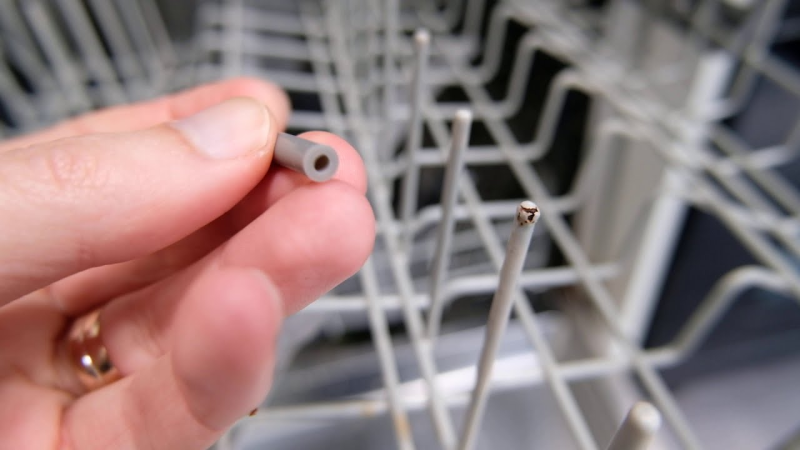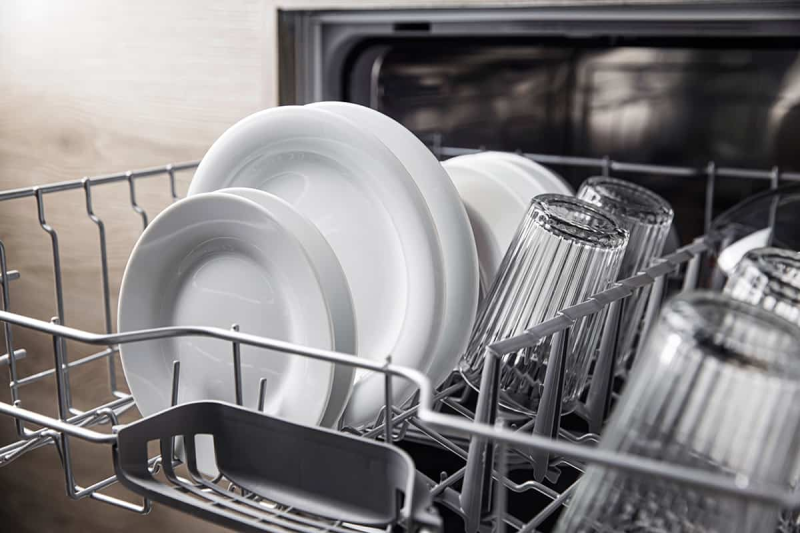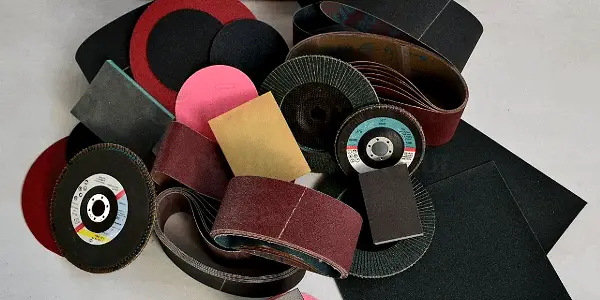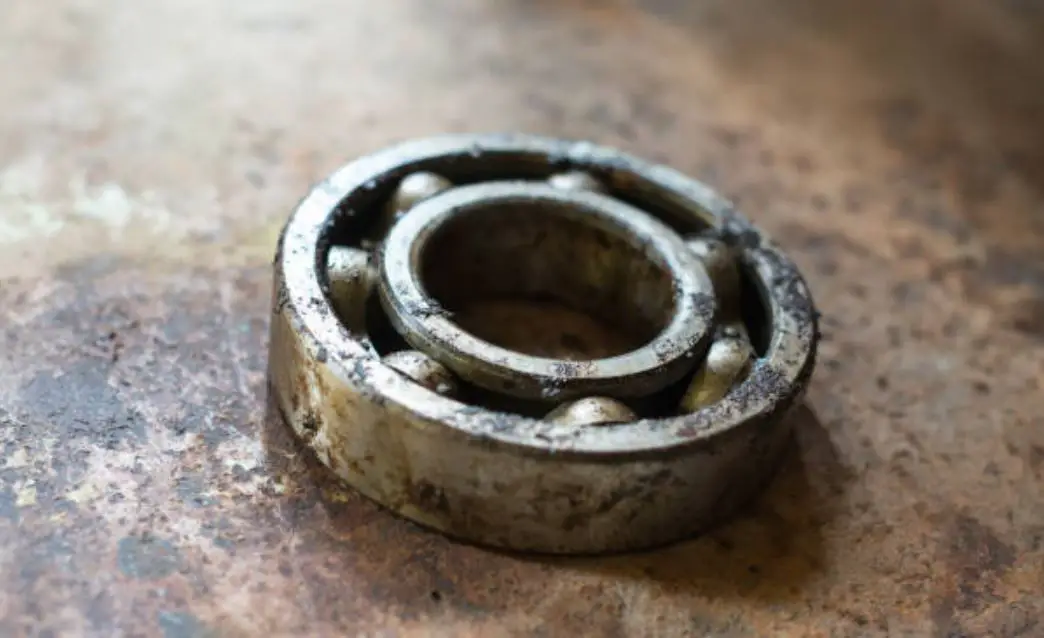Dishwashers are one of the most convenient household appliances for cleaning dishes. However, over time, dishwasher racks can become worn and rusted, affecting the appearance and performance of the dishwasher. Rust on a dishwasher rack can make it difficult to open and close, and can also scratch or damage the dishes being washed. In this post, we will discuss the causes of dishwasher rack rust and how to prevent and remove it.
The main cause of dishwasher rack rust is exposure to moisture and high humidity levels. This can lead to the metal racks corroding over time. In addition, some dishwashing detergents contain chemicals that can contribute to the formation of rust. Regular use and exposure to high heat during the drying cycle can also cause the racks to wear down and become more susceptible to rust.
To prevent dishwasher rack rust, it is important to regularly clean and dry the racks after use. This will help remove any moisture that may be present and reduce the chance of rust forming. It is also recommended to avoid using harsh chemicals or abrasive cleaning products on the racks. If rust does form, it can be removed using a combination of baking soda and white vinegar. Simply mix the two ingredients together to form a paste, and apply the mixture to the affected area. Let it sit for a few minutes, then scrub the area with a brush or cloth before rinsing with water. With these simple steps, you can keep your dishwasher racks looking and functioning like new.

Dishwasher Rack Rust Overview
First of all, it’s important to understand that rust is simply the oxidation of iron. When iron is exposed to moisture, it reacts with oxygen to form iron oxide, which we commonly know as rust. In the case of dishwasher racks, the combination of high humidity levels, exposure to water and heat, and sometimes even the use of harsh detergents, can accelerate the rust formation process.
Now, let’s talk about how to prevent rust from forming on your dishwasher racks. First of all, it’s a good idea to regularly clean and dry the racks after use. This will help to remove any moisture that may be present, reducing the chance of rust forming. Secondly, consider using a rust inhibitor, such as a silicone-based spray, to protect the metal from moisture and improve its resistance to rust. This can be applied to the dishwasher racks after cleaning, before storing them.
When it comes to removing rust that has already formed, there are several methods that you can try. The most common is to use a rust remover, which is a specially formulated chemical that dissolves the rust. Some popular options include citric acid and phosphoric acid-based rust removers. These products are effective, but they can also be harsh and potentially damaging to other parts of your dishwasher, so be sure to follow the instructions carefully.
Another option is to use a combination of baking soda and white vinegar. This creates an abrasive paste that can be scrubbed onto the affected area to remove the rust. This method is more gentle than using a chemical rust remover and is safe for use on most dishwasher racks.
In conclusion, preventing and removing dishwasher rack rust is a matter of understanding the causes of rust formation and choosing the right solution to suit your needs. Whether you opt for a rust inhibitor, a rust remover, or a more natural solution like baking soda and vinegar, there’s sure to be a method that will help keep your dishwasher racks looking and functioning like new. Also, be sure to get a long-lasting cookware.
Dishwasher Rack Rust Comparison Table
- Rust Inhibitors: Rust inhibitors are products specifically designed to prevent the formation of rust on metal surfaces. They work by creating a barrier that protects the metal from moisture and other elements that cause rust to form. Some popular rust inhibitors include silicone-based sprays and wax-based products. They are easy to apply, and can help extend the life of your dishwasher racks.
- Rust Removers: Rust removers are chemicals specifically designed to dissolve rust. They work by breaking down the iron oxide (rust) into iron and oxygen. Popular rust removers include citric acid and phosphoric acid-based products. While they are effective, they can be harsh and potentially damaging to other parts of your dishwasher, so it’s important to follow the instructions carefully.
- Baking Soda and White Vinegar: This combination creates an abrasive paste that can be used to remove rust from dishwasher racks. The baking soda acts as a gentle abrasive, while the acetic acid in the white vinegar reacts with the iron oxide (rust) to dissolve it. This method is more gentle than using a chemical rust remover and is safe for use on most dishwasher racks.
| Ingredient | Pros | Cons |
|---|---|---|
| Rust Inhibitors | Easy to apply | Can be more expensive |
| Rust Removers | Fast and effective | Can be harsh and potentially damaging |
| Baking Soda and White Vinegar | Gentle and safe | Takes longer and may require more effort |

Equipment To Work With Dishwasher Rack Rust
| Equipment | Purpose |
|---|---|
| Soft-bristled Brush | For scrubbing the affected area when using a rust remover or baking soda and white vinegar solution. |
| Gloves | To protect your hands from harsh chemicals or abrasives when using a rust remover. |
| Eye Protection | To protect your eyes from any potential splashes when using a rust remover. |
| Rags or Paper Towels | For wiping away excess solution or drying the dishwasher racks after cleaning. |
| Bucket or Container | For mixing the baking soda and white vinegar solution or for holding the rust remover. |
| Silicone-based Spray | For applying a rust inhibitor to the dishwasher racks. |
Step By Step Instruction On How To Make Dishwasher Rack Rust
Rust is a naturally occurring process that occurs when metal is exposed to moisture and oxygen, causing it to deteriorate over time. To prevent rust from forming on your dishwasher racks, you can use rust inhibitors or regularly clean and dry your dishwasher racks after use.
If your dishwasher racks are already rusting, here are some steps to remove the rust:
- Remove the dishwasher racks from the dishwasher and place them on a flat surface.
- Put on gloves and eye protection if using a rust remover.
- Mix a solution of baking soda and white vinegar to form a paste.
- Apply the paste to the rusted areas and let it sit for about 10-15 minutes.
- Using a soft-bristled brush, scrub the affected area to remove the rust.
- Rinse the dishwasher racks thoroughly with water to remove all residue.
- Dry the dishwasher racks completely before putting them back in the dishwasher.
Alternatively, you can also use a rust remover by following the instructions on the product label.
F.A.Q.
What causes dishwasher rack rust?
Dishwasher rack rust occurs when metal is exposed to moisture and oxygen over time, causing it to deteriorate and form rust. This can happen when dishwasher racks are not dried thoroughly after use or if they are made of a material that is prone to rusting.
How do I prevent dishwasher rack rust?
To prevent dishwasher rack rust, you can use rust inhibitors, regularly clean and dry your dishwasher racks after use, or choose dishwasher racks made of materials that are less prone to rusting, such as plastic or stainless steel.
Is it safe to use rust inhibitors on dishwasher racks?
Yes, rust inhibitors are safe to use on dishwasher racks. However, it’s important to follow the instructions carefully and to not overuse the product as it can potentially cause damage to other parts of your dishwasher.
Can baking soda and white vinegar remove dishwasher rack rust?
Yes, baking soda and white vinegar can be used to remove rust from dishwasher racks. The baking soda acts as a gentle abrasive, while the acetic acid in the white vinegar reacts with the iron oxide (rust) to dissolve it.
What is the most effective way to remove dishwasher rack rust?
The most effective way to remove dishwasher rack rust depends on the severity of the rust and the material of the dishwasher racks. For minor rust, a solution of baking soda and white vinegar can be effective, while for more severe rust, a rust remover may be more appropriate. It’s important to follow the instructions carefully and to choose a product that is safe for use on your dishwasher racks.



Leave a Reply